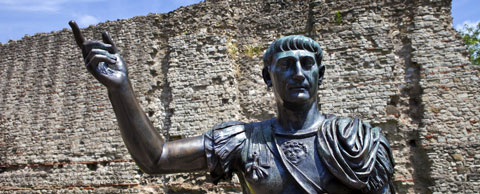
Roman Britain
In part two of my British history series I’m looking at how the Romans took over from the Celts and extended their empire to Britain.
If you missed last month’s installment on Ancient Britain and the Celts and want to go even further back in time then you can find my previous post here.
This series aims to give you a brief snapshot of different periods of British history, from the earliest period of human presence to the present day. We hope it will give you a small insight into the history of the country as well as some ideas for places to visit and things to see during your year in the UK. For Roman sites that you can visit in Britain, take a look at this interactive map.
After several centuries of a Celtic majority over the isle of Britain and north west mainland Europe, several tribes of Germanic and central European warriors started to attack and spread westward.
The armies of the Roman Republic, headed by Julius Caesar, also marched through western Europe, conquering the Gauls, and in 55 BCE Caesar landed an army of 10,000 soldiers in Deal, Kent. The Romans were met with fierce resistance and beaten back by the Celtic tribes in Britain. The following year Caesar returned with over 30,000 troops. This force fought its way much further inland along the Thames Valley, though was eventually driven back by Britain’s Celts. Even though Caesar’s army was forced to withdraw, the Isle of Britain was now within the influence of Rome and the local tribes were forced to pay tribute.
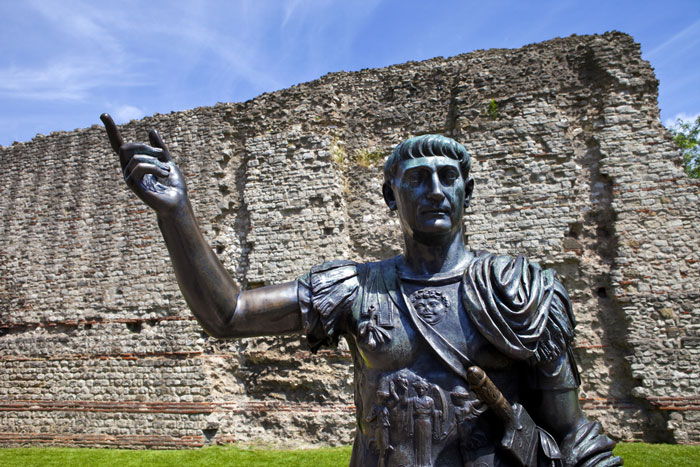
Following Caesar’s departure from Britain the Celtic tribes continued to rule their land, but one particular tribe, the Catuvellauni started to become more powerful. By this time Rome had ceased to be a republic. Instead, the empire was headed by powerful rulers. In AD 42, perhaps in order to boost his prestige or quell a rebellious Army, the Emperor Claudius raised an army to control the whole of Britain. In AD 43, two years after King Cunobelinus of the Catuvellauni died, General Aulus Plautuis’ Roman legions landed in Kent.
Because of the dominance of the Catuvellauni, eleven Celtic tribes allied with the Roman invaders. King Cunobelinus’ sons, Caratcaucus and Togodunmas, along with some other Celtic tribes, continued to resist the invaders. However, the Romans proved to be a tough opponent being very well-equipped and trained. Celtic warriors are often portrayed as brave and fearless but disorganised, ill-disciplined fighters. However, this is not necessarily fair, particularly when it comes to the use of chariots in warfare.
It took about four years for the Romans to conquer the south of England and 30 years to conquer the West Country and Wales, and they had to face many rebellions during this period. Perhaps one of the most important of these rebellions in British folklore is the rising of Boudicca and the Iceni tribe in AD 60 who lived roughly in what is now Norfolk.
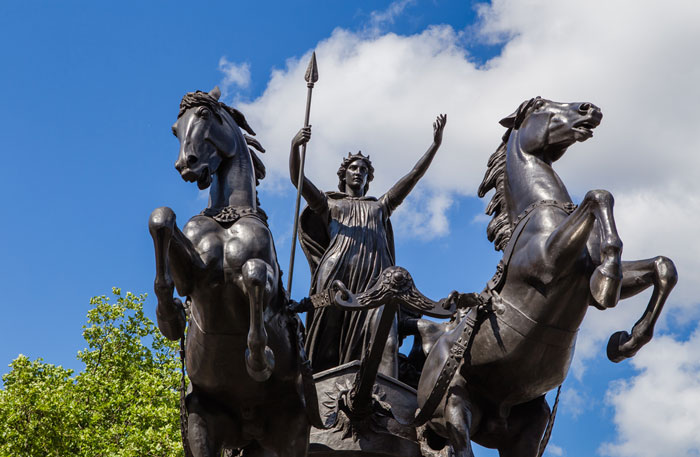
The Iceni tribe and the Romans had managed to agree to live together in a mutually beneficial way following the invasion. When the leader of the tribe, Prasutagus, died the local Roman commander broke their promise and took away all the land and possessions of the Iceni tribe, raped the children of Prasutagus, and flogged his wife Boudicca. At this time the bulk of the Roman army was conquering North Wales. In response to the maltreatment, Boudicca raised an army of Iceni and members of neighbouring tribes numbering over 120,000 warriors.
Boudicca’s army destroyed the Roman capital of Colchester and the town of London, killing an estimated 70,000 Roman soldiers, settlers, and sympathisers. In response, the Roman’s gathered their armies and marched to meet the rebellion at the battle of Watling Street, now an unknown location in the midlands. Although Boudicca’s army was nearly ten times as numerous, Roman tactics and discipline helped win the battle with very few losses. In the aftermath, Boudicca took her own life and the location of her body has remained a mystery. She has since become an important figure in British folklore.
The Romans continued to fight the Celtic tribes invading as far North as Inverurie in Scotland. The Romans never had a strong hold over Scotland. The northernmost extent of the Roman Empire stopped at Hadrian’s Wall, running from the west to east coast in the far north of England.
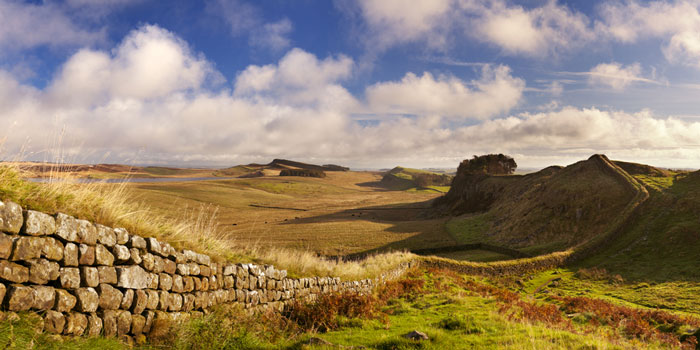
Once the British tribes had been subdued the Romans began to stamp their authority over the island, building new towns and forts, whereas Celtic life had been a rural one. Colchester was made the capital of Province Britannia but London soon outgrew this in importance due to its location as an important trading post.
The Romans brought with them a new way of life which many of the Celtic people happily adopted, learning Latin, Roman customs and adopting Roman dress. Local Celtic rulers who supported the Romans prospered, living in stylish Roman villas built across the country. The Romans also brought new technology, foods, drink and introduced a new monetary system and single currency. Over the four centuries of Roman occupation the local inhabitants became Romanised, but the Romans also honoured Celtic customs and gods such as with the public baths at Bath which were dedicated to the Roman God Minerva and Celtic god Sulis.
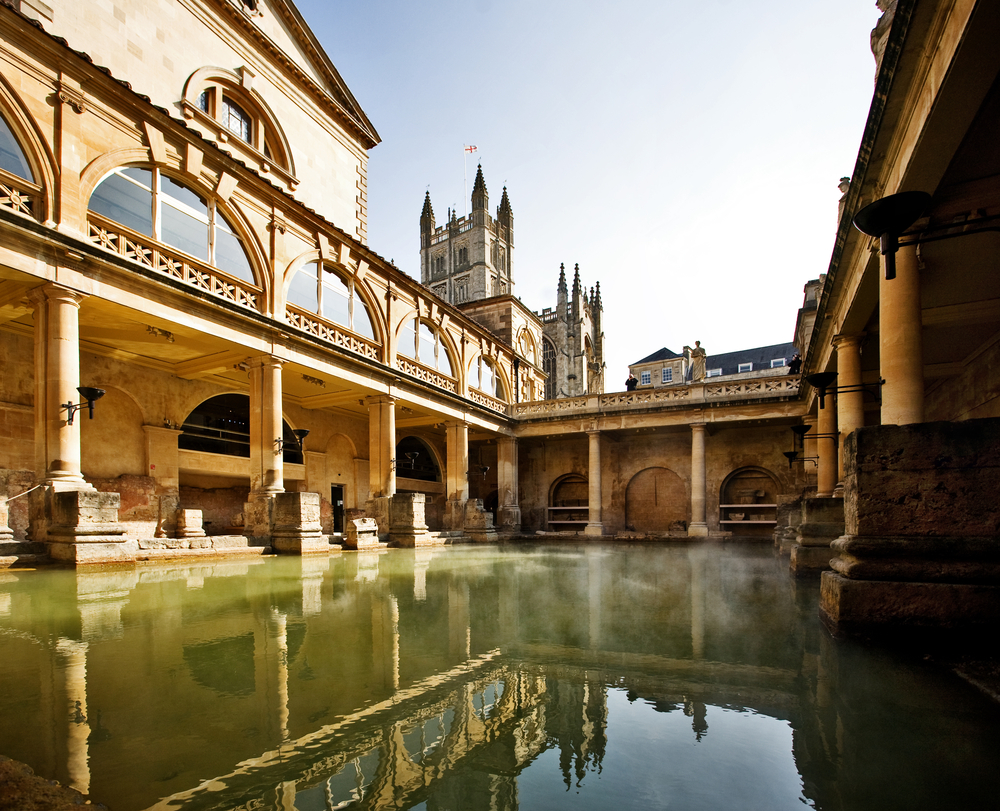
Over the centuries the Roman Empire suffered various crises, with threats from Germanic tribes and Asiatic invaders. Britain itself was subject to raids from Gaels (Irish Celts), Picts, and Saxon Tribes. Between AD 401 and 410 Roman troops were withdrawn from Britain to protect Roman provinces on the continent and in AD 410 Rome itself was sacked by the Visigoths and the Emperor Honorius declared that Britain would have to look after itself.
Britain came under increased raids from Saxon invaders and, with the breakdown of centralised Roman control, groups of Romano-Britons started to spring up over the province. Eventually the Anglo Saxons would overcome these local inhabitants and begin the next chapter of British history after 400 years of Roman rule.

